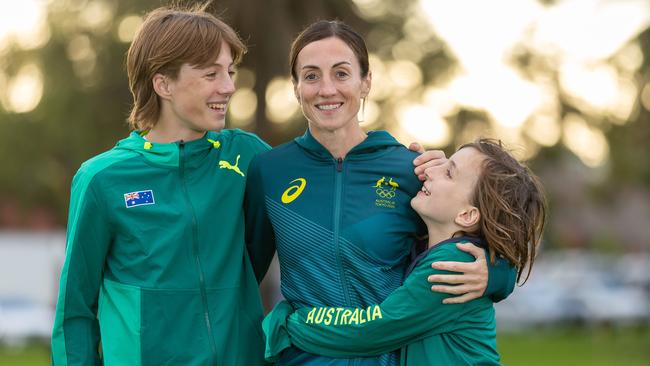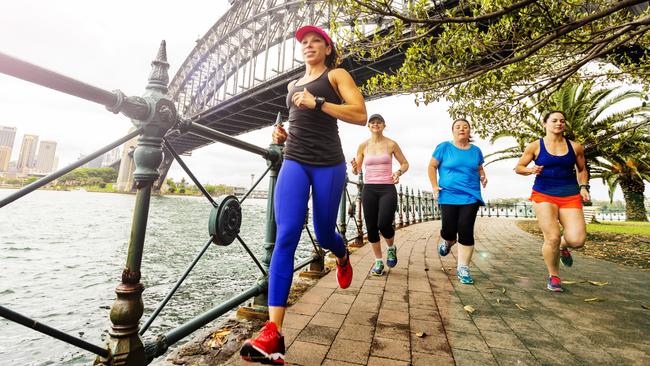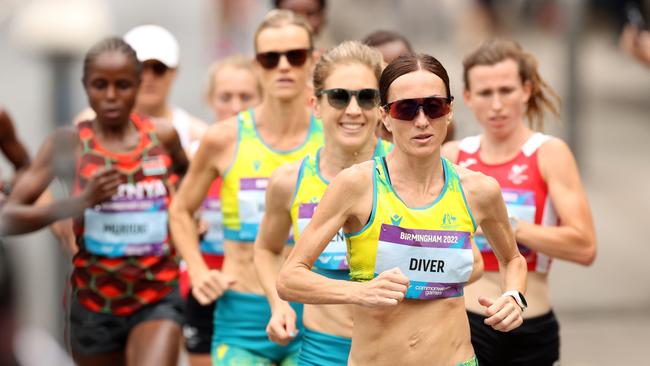Thinking of joining a run club? It can literally change your life
Sinead Diver joined a run club in her early thirties during maternity leave. Now she’s at the Paris Olympics. Run clubs improve mental health and social lives — but there are common misconceptions.

You can simply step outside in the early morning hours to see the streets and parks filled with the rhythmic pounding of feet as running clubs gain popularity. It’s undeniable that there’s a certain level of FOMO (fear of missing out) associated with not being a runner in 2024. From casual croissant-run clubs to the famous pre-dawn 440 club, there’s a running community for everyone. But if you think this is just another passing fitness craze, think again.
For more than 50 years, brands like Nike have fostered a culture of running, consistently innovating and motivating runners worldwide. Several factors have contributed to the recent rise in popularity of run clubs, with increased visibility and inclusivity playing key roles. Lydia O’Donnell, Nike Pacific Head Run Coach, explains, “More people, especially women, are taking up running because they see themselves represented more in our sport, thanks to social media and women sharing their running experiences online.” She also acknowledges Nike Run Club’s enduring impact on the running community, saying, “Nike laid the foundations of what their run community space looks like, and now you go out on a Saturday morning, and there are hundreds of different groups pounding the pavement together.”

It has become increasingly common to forego typical weekend activities in favour of joining running clubs. O’Donnell notes, “People now are choosing not to go out on a Friday night because they want to get up in the morning and do their run club.” The result is a diverse and dynamic running landscape where runners of all levels come together to support each other.
Ahead of the launch of the KICRUN Club, Kic founders Laura Henshaw and Steph Claire Smith conducted a survey to understand the attraction, barriers, and perception of running clubs. Surveying over 5,000 women and non-binary individuals, KICRUN found that motivation (62%), a sense of community (37%), and a boost in mood (25%) were the primary factors attracting people to running clubs. As Henshaw explains, “The feedback from our community was surreal. People are not just joining for fitness; they are seeking connection and accountability.” It’s this sense of community and shared purpose that is instrumental in luring both novice and experienced runners. The survey also highlights how run clubs offer more than physical exercise. They provide a supportive network that promotes personal growth. “The amount of times I’ve heard people say, ‘I can’t believe how far I just ran,” adds Smith.
The social aspect of running clubs not only helps individuals form new connections but also provides a supportive environment that contributes to improved mental health. During coaching sessions, O’Donnell has observed that running with a community fosters conversations that can be deeply therapeutic. “When you get two people running side by side… the flow of conversation that comes from that is just incredible,“ she says. The unique dynamic of pounding the pavement with minimal eye contact encourages runners to open up and share their thoughts more freely.
Henshaw has also witnessed the significance of community in KICRUN Club, stating that it’s not solely about running, but about establishing a space where individuals can gather, support one another, and form genuine connections. “When people join our run clubs, they’re not just signing up for a fitness activity. They’re becoming part of a community that shares common goals and experiences,” she explains. Henshaw and Smith mention that they’ve observed numerous friendships develop within their run clubs, with members frequently staying after runs for coffee and conversations.
Despite their increasing popularity, run clubs often face misconceptions that deter potential members. A common belief is that they are only for experienced runners, or that they can be intimidating. Henshaw explains, “There’s this perception that run clubs are only for a certain fitness level,” a misunderstanding that their community works to dispel. According to the KICRUN survey, 41% of those who haven’t joined a running club believe they’re not fast enough, and 17% feel intimidated. However, run clubs are meant to welcome runners of all levels, offering support and guidance without judgement. Smith often finds herself reassuring potential members that “there’s no expectation to have a certain pace or to do races; you just come as you are.”
When Sinead Diver joined a run club, she had no intentions of becoming a competitive runner. She started running in her early thirties during her maternity leave, after having her first child. “I just wanted to meet people and to have something to do for an hour a day, rather than being at home on my own, so I joined a run club,” she explains. However, she discovered her talent for running and things took off from there. Now, she is training for the 2024 Paris Olympics, her second Olympic Games, after finishing tenth in the 2020 Tokyo Olympic marathon.

For those who can’t access run clubs or prefer to run solo, technology has significantly enhanced the run club experience. According to Henshaw, the Kic app has transformed their run clubs by providing audio-guided runs, tracking progress, and facilitating communication among members. “Through the Kic app, we’re able to track progress, create challenges, and communicate with members efficiently,” she notes. This integration of technology allows runners to follow structured programs tailored to their goals while feeling supported by a virtual community. The Nike Run Club app also offers guided runs with a variety of coaches, including celebrities and athletes.
Social media platforms have also played a crucial role in raising awareness and garnering support. Instagram and Facebook have allowed clubs to demonstrate their inclusive and supportive ethos, drawing in new members and providing a platform for runners to celebrate their accomplishments and inspire each other. KICRUN’s private Facebook group boasts over 50,000 members, fostering a strong sense of community and motivation that goes beyond just the in-person meet-ups.
Whether you’re searching for ways to improve your fitness, enhance your wellbeing, or connect with a supportive community over post-run treats, perhaps today is the day you purchase some new kicks and join your nearest running club.




To join the conversation, please log in. Don't have an account? Register
Join the conversation, you are commenting as Logout